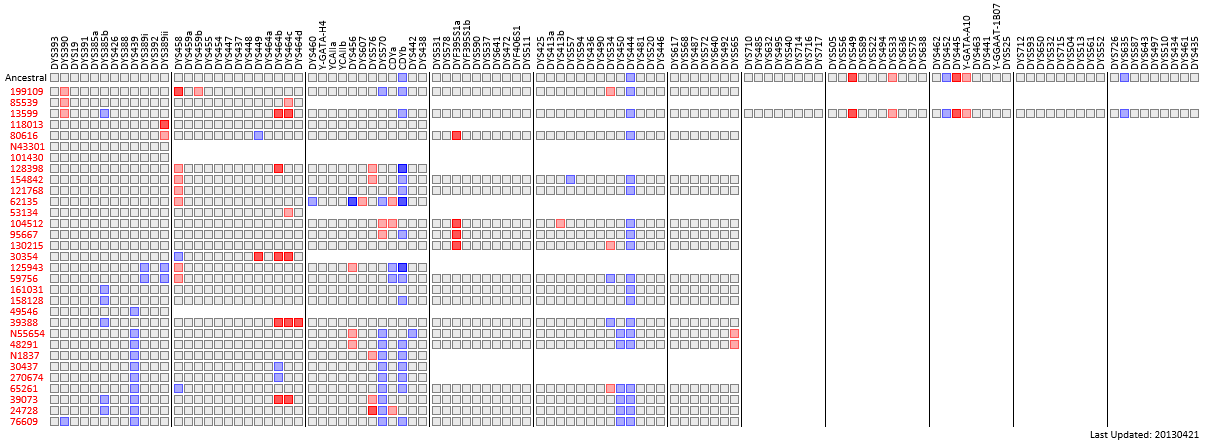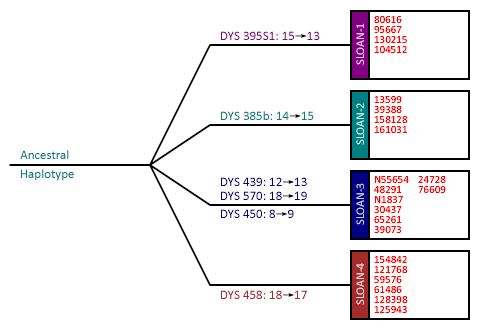Sloan
Y-DNA Results
The primary source of Sloan Y-DNA information is the Sloan FTDNA Project. Not all Sloan men belong to the Little Scottish Cluster, but in fact the largest Sloan lineage does. On the Y-DNA Results page for the project, the LSC Sloans can be found in the section labelled R-L21 "Little Scottish Cluster" SLOAN main line.
Rather than presenting the actual allele values for each marker, we instead present the results in a more graphical manner to emphasize the pattern of mutations relative to the ancestral haplotype for the entire cluster. The allele value for each marker is given relative to the LSC ancestral haplotype. A grey square for a marker indicates that the tested member has the ancestral value for the marker; no net mutations have taken place. Increasingly red squares indicate a mutation to an allele with a lower repetition count, while increasing blue squares correspond to a mutation to an allele with a greater repetition count.


Based on the number of mutations present in the haplotypes, a rough age estimate for this surname might be 700-800 years old. This is in fact old enough that we can start to make out the internal structure of the surname. Since the founding of the surname many mutations have taken place, and these mutations have now led to various branches which can be identified by their haplotype.
In the diagram below, we divide the Sloan family into four groups. Not all the Sloan members can be assigned to these groups. Some lack sufficient markers to identify the correct group, while others may not even fit in any of these groups. These groups are just an early attempt to break up the Sloan surname.
The members of Sloan-1 share a common mutation to DYS395S1. Those of Sloan-2 share a common mutation to DYS 385b. Those of Sloan-3 share 3 mutations to markers DYS439, DYS570 and DYS450. Those of Sloan-4 share a common mutation to DYS458.

One of the men included in Sloan-4, kit 61486, is in fact an Adams. His haplotype is close enough to the Sloan haplotype that it is tempting to consider the possbility that his ancestry may have been Sloan.
